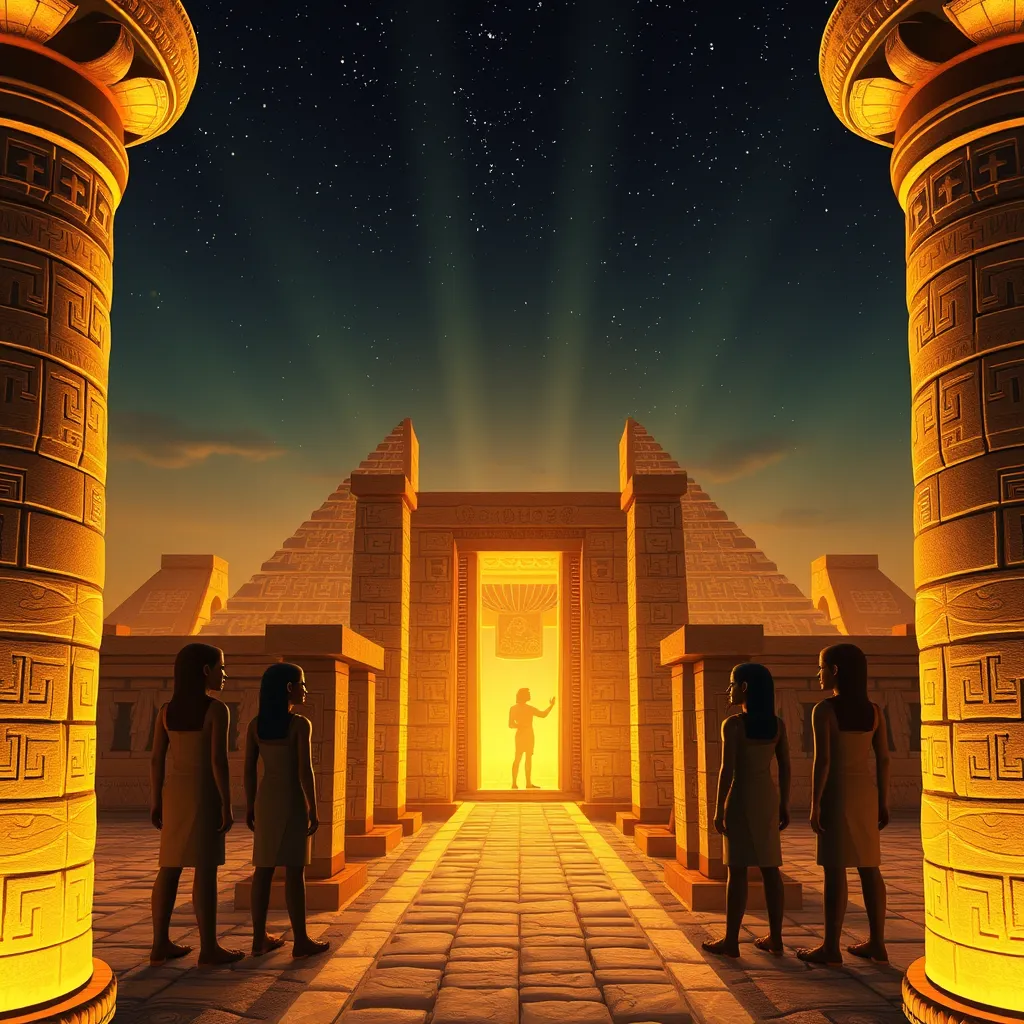The Duat: Unveiling the Secrets of the Afterlife
I. Introduction to the Duat
The Duat, in ancient Egyptian belief, represents the realm of the dead, a complex and mystical place where the souls of the deceased journey after death. This afterlife dimension is not merely a destination but a crucial aspect of the Egyptian understanding of existence, encompassing both a physical and spiritual landscape. The Duat is significant as it reflects the ancient Egyptians’ views on mortality, the soul, and the journey toward the afterlife.
In the afterlife journey, the Duat serves as a transitional space where the deceased confronts various trials and tribulations before reaching the final judgment and eternal life. This journey is marked by a series of challenges that test the deceased’s worthiness and adherence to Ma’at, the principle of truth and justice.
II. Historical Context of the Duat
The concept of the Duat has its origins in the early stages of ancient Egyptian religion, emerging during the Old Kingdom (c. 2686–2181 BCE). It was believed that the Duat was a necessary passage for the soul, filled with both dangers and opportunities for purification.
Throughout the dynasties, the understanding of the Duat evolved. During the Middle Kingdom (c. 2055–1650 BCE), the Duat became more defined, and texts began to describe its geography and inhabitants in greater detail. By the New Kingdom (c. 1550–1070 BCE), the Duat was intricately detailed in funerary texts, and the journey through it was a central theme in the Book of the Dead.
III. The Geography of the Duat
The Duat’s landscape is rich with symbolism, often depicted as a vast, dark expanse filled with various terrains like rivers, mountains, and fields. This representation reflects the duality of life and death, where the familiar and the terrifying coexist.
Key locations within the Duat include:
- The Field of Reeds: A paradise-like zone where the righteous enjoy eternal bliss.
- The Waters of Chaos: A treacherous area representing the dangers faced by souls.
- The Hall of Two Truths: The site of judgment where the heart of the deceased is weighed against the feather of Ma’at.
These locations symbolize the various stages of the afterlife journey, illustrating the contrast between reward and punishment.
IV. Deities and Spirits of the Duat
The Duat is populated by numerous deities and spirits, each playing a vital role in the afterlife. Among them, the following gods are the most significant:
- Osiris: The god of the afterlife, resurrection, and fertility, who presides over the judgment of the souls.
- Anubis: The god of mummification and the afterlife, known for guiding souls through the Duat.
- Thoth: The god of wisdom and writing, who records the deeds of the deceased during judgment.
Additionally, spirits of the deceased, known as “ba” and “ka,” navigate the Duat, seeking to attain eternal life. These beings often assist or hinder the progress of souls based on their earthly actions.
V. The Journey through the Duat
The journey through the Duat is fraught with peril, as the deceased must navigate a series of challenges and trials to reach the afterlife successfully. This journey typically involves:
- Facing guardians and monstrous beings that test the resolve of the deceased.
- Reciting spells and prayers to invoke protection and guidance.
- Answering questions posed by Anubis and other deities regarding their earthly lives.
Ultimately, the deceased must pass the weighing of the heart ceremony, where their heart is measured against the feather of Ma’at. A heart lighter than the feather signifies a life well-lived, granting passage to the realm of the blessed.
VI. The Book of the Dead and Other Texts
The Book of the Dead is perhaps the most famous ancient Egyptian text associated with the Duat. It is a compilation of spells, prayers, and incantations intended to aid the deceased in their journey through the afterlife. These texts provide instructions on how to navigate the challenges of the Duat and ensure a safe passage to the afterlife.
Other important texts include:
- The Pyramid Texts: Early funerary texts inscribed in pyramids, detailing the journey of the pharaohs.
- The Coffin Texts: A series of spells found in Middle Kingdom coffins, expanding on the ideas presented in the Pyramid Texts.
These texts not only serve a practical purpose but also reflect the ancient Egyptians’ beliefs and values regarding death and the afterlife.
VII. Symbolism and Art of the Duat
Artistic representations of the Duat are abundant in tombs and temples, showcasing the beliefs and practices surrounding the afterlife. These artworks often feature:
- Images of the deceased interacting with deities.
- Symbolic landscapes that depict both the beauty and dangers of the Duat.
- Scenes of judgment, highlighting the weighing of the heart and the rewards of a righteous life.
Symbolic elements, such as the ankh (symbol of life) and the scarab (symbol of rebirth), frequently appear in these depictions, emphasizing the Egyptians’ hopes for resurrection and eternal life.
VIII. Modern Interpretations and Legacy
The Duat continues to influence contemporary understandings of the afterlife, as modern scholars and spiritual seekers explore its meanings. The concepts of judgment, moral accountability, and the journey of the soul resonate within various spiritual traditions today.
Moreover, the Duat’s impact on popular culture is evident in literature, film, and art, where themes of the afterlife and the quest for immortality are explored. From movies depicting ancient Egyptian lore to books inspired by the mysteries of the Duat, its legacy endures as a fascinating aspect of human curiosity about death and what lies beyond.




